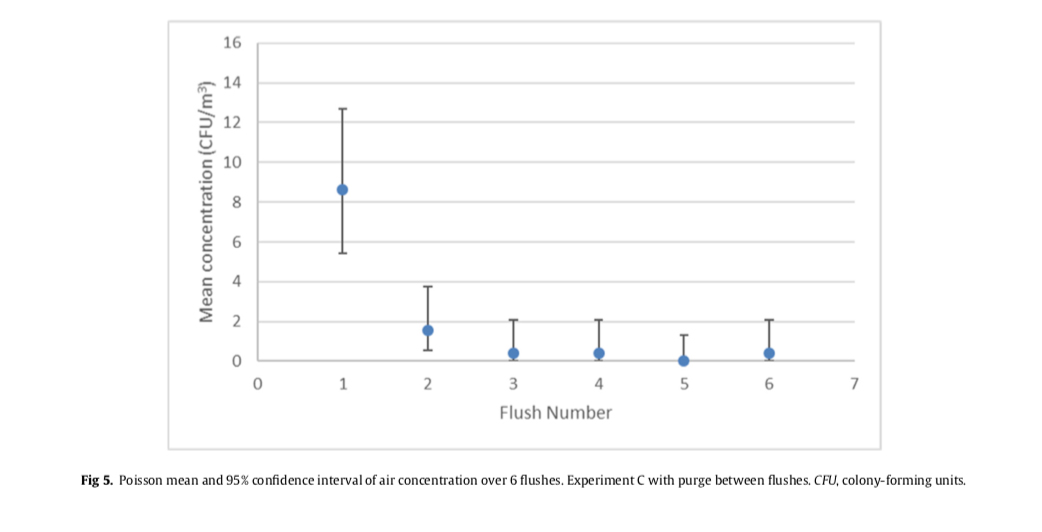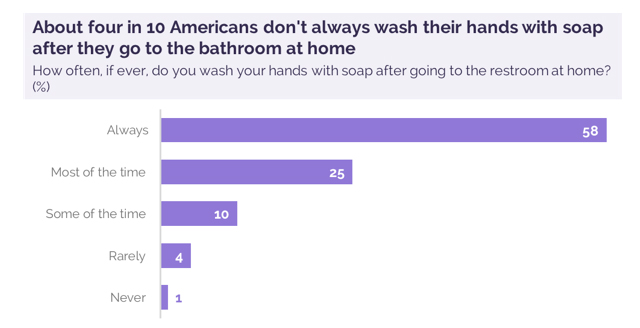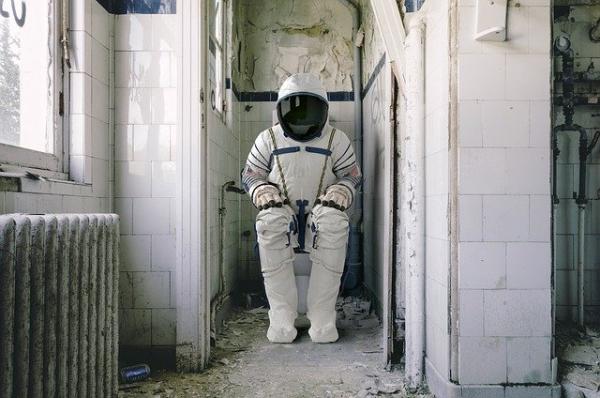For those late to the party, here is the gist of the study. Using computer simulations, researchers found that the swirling waters created when we flush the toilet result in disturbances in the air in the bowl. That makes some intuitive sense as we have all seen how the wind will drive tides creating whitecaps on the waves. The mathematical model is, to be frank, above my pay grade, but requires understanding turbulence as well as the interface and energy transfer between the water in the bowl and the air immediately above.
The researchers reported
“massive upward transport of virus particles is observed, with 40%–60% of particles reaching above the toilet seat, leading to large-scale virus spread.”
In fact, there were no real viral particles, but the model used particles of the overall size and weight of COVID-19 in their calculations. The model’s assumptions involve the volume of water and the bowl, as well as the force of the water initiating the swirling. The physical laws governing these forces are well described, so I am going to take as a given that the number of particles in the plume and their reach are reasonably accurate. Among the assumptions of the model are two that bear further biologic scrutiny. They “seeded” the bowl in the model with 6000 particles, and for there to be relevant “large-scale virus spread” those particles need to be viable. That leads us to ask the more pertinent question, how accurate are these two assumptions? What do we know about the fecal spread of COVID-19?
Fun fact. The first reported patient with COVID-19 in the US had some abdominal pain, seen in roughly 15% of patients, and his feces demonstrated the presence of COVID-19’s signature RNA. A study of patients in Wuhan found that about half of all COVID-19 positive patients had viral shedding into their feces and that abdominal symptoms were not consistently present. The onset of shedding was after respiratory cultures were positive and persisted for about 11 days after respiratory cultures were negative. But all of these results were based on the presence of RNA; viability was not measured. Bottom line, we know that COVID-19 is shed from our GI tract, so yes, the toilet bowl will contain some COVID-19 particles, but are they viable and capable of infecting others?
Short answer, we do not know. In one study performed in the laboratory, COVID-19 was inactivated by the fluid found in the large intestine, reduced 5-fold in one hour, and “little infectious virus was detectable at the 24-hour time point.” In the same study, three of 10 fecal samples from COVID-19 patients demonstrated RNA, but none demonstrated infectious particles by culture. In another study, cited by the current paper’s researchers, a bowl seeded with 20,000 colony forming units (CFU) of C.dificile, resulted in roughly 8 CFU’s being detected in the air on either side of the toilet. Finally, other studies do show that RNA evidence of viruses, especially the GI norovirus, will persist in a toilet bowl for some time.
roughly 8 CFU’s being detected in the air on either side of the toilet. Finally, other studies do show that RNA evidence of viruses, especially the GI norovirus, will persist in a toilet bowl for some time.
The aerosol plume generated by flushing the toilet is capable of launching microorganisms, including COVID-19, into the air. It rises about three feet from the ground, so for adults, most of us needn’t worry about inhaling these particles. Those particles will, over time, fall, perhaps to the toilet seat and the surrounding floor. But there is little evidence to demonstrate that these particles are infectious, and there has been to date no reported cases of a patient being infected by a fecal source.
 The researchers suggest that closing the lid on a toilet before flushing will reduce the plume, but all that plume will be deposited on the cover. They suggest you wipe the seat before sitting down, but I suspect individuals likely to follow that advice, already take precautions; and of course, they recommend washing your hands after using the toilet. But of course, you already do that. The graph is from yougov.com
The researchers suggest that closing the lid on a toilet before flushing will reduce the plume, but all that plume will be deposited on the cover. They suggest you wipe the seat before sitting down, but I suspect individuals likely to follow that advice, already take precautions; and of course, they recommend washing your hands after using the toilet. But of course, you already do that. The graph is from yougov.com
Source: Can a toilet promote virus transmission? From a fluid dynamics perspective Physics of Fluids DOI: 10.1063/5.0013318




